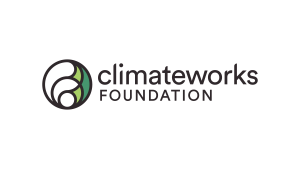The Wall Street Journal described recently-elected Donald Trump’s leadership as ‘deliberate chaos’. We know chaos. We live it. A barrage of destructive tweets and policy bombs have resulted in widespread protests in the United States and globally. Bans on Muslims and refugees, erosion of human rights, denying climate change and disrespecting international relationships that have kept the world safe—all create risks to global business and civil society.
The chaos erodes public trust and is exacerbated by falsehoods, fake news, and threats to destroy independent media. While the world is pushing back with civil disobedience and legal action, we need more leaders committed to conducting themselves with honesty, trust, and transparency.
Philanthropy can lead by example
In these times of uncertainty and divisiveness, philanthropy can and must lead by example. Such leadership is characterized by taking risks and showing courage; by illustrating what collaboration based on inclusion and compassion looks like; by demonstrating a commitment to building solutions from the ground up; and by showing how learning and transparency ensure open societies and human rights.
Through our research, in which we conducted 1,000 interviews in 15 countries across five continents, we not only learned that chaotic and autocratic leadership does not work when dealing with highly complex challenges we also encountered.many examples of what we call inclusive and ‘deliberate leadership’.
One illustration of deliberate leadership in philanthropy was an early investment in a high risk, ‘big bet’ to address the threat of climate change by the William and Flora Hewlett Foundation and David and Lucile Packard Foundation. These funders underwrote ClimateWorks: Lessons in Learning and Leadership, an analysis of a US$1 billion investment to create ClimateWorks Foundation (CWF).
 The findings, based on 65 interviews, openly discuss successes and challenges while trying to achieve multiple goals: securing additional funding; quickly creating an organization with worldwide reach; and advancing an ambitious policy strategy opposed by international and US decision makers.
The findings, based on 65 interviews, openly discuss successes and challenges while trying to achieve multiple goals: securing additional funding; quickly creating an organization with worldwide reach; and advancing an ambitious policy strategy opposed by international and US decision makers.
CWF was called ‘brilliant’ and an ‘epic failure’. As with most complex problems, the truth is both – and all points in between. The case has broad relevance to leaders seeking to build an effective global intermediary to address a wicked problem.
Sharing success and failure about high profile investments does not come easily to philanthropy. A study by the Center for Effective Philanthropy titled Benchmarking Foundation Evaluation Practices notes that only 17 per cent of US foundations share evaluation results with other foundations and 14 percent share such results with the public.
Hewlett President, Larry Kramer, and Fay Twersky, Director of the foundation’s Effective Philanthropy Group, however, have become champions for truth-telling in philanthropy, taking steps internally and externally to create a culture of transparency. Examples of such transparency include supporting CWF-type case studies and spearheading the Insight Fund with other funders to foster feedback loops.
Lessons learned
The case study of the ClimateWorks Foundation is really a programme of study that incorporates six teaching vignettes sharing lessons learned by key leaders involved in its first phase of development. Highlights include:
- Make organizational culture as important as program strategy
Mark Burget, former CWF Chief Operating Officer and President, emphasized that organizational development is as important as strategy. Burget explained, ‘To take on an issue as big as climate change, you need both a substantive strategy and an organizational strategy, and both have to be well thought out, well designed and well managed.’CWF invested US $45 million dollars, with McKinsey, to develop strategy, but also needed parallel efforts to build an organization that was enduring.Burget realized the importance of clarifying governance structures, expectations, and lines of accountability.He also recognized that making integrity key to organizational health at all stages, especially during start-ups, when protocols are still maturing and informal.Burget encouraged the value of simplicity when creating a global organizational strategy.Just as important, he recommended hiring people ‘you don’t know, often without skills you don’t know you need’ to fill knowledge gaps and to help avoid creating an ‘echo-chamber of groupthink.’ Finally, Burget recognized that trust among diverse partners helps ensure accountability and integrity.
- Embrace risk, threats, and failure
Walter Hewlett, Hewlett Foundation co-founder and its former board chair, acknowledged that risk and learning from failure were a part of the calculus of philanthropy, and that CWF would have benefitted from scenario-planning to anticipate ‘what-if’ situations when things didn’t go as expected. He also believed that foundation leaders and staff felt that the risk of doing nothing outweighed the risk of attempting something new.Hewlett explains, ‘We didn’t think that if we didn’t do something somebody else would, so we could sit back and wait to see what others would do. We felt that something dramatic needed to be done.’Another risk identified was the possibility that other funders may not join or provide funding (and they did not), reinforcing the critical need to build an organization with colleagues from the outset.
He also believed that foundation leaders and staff felt that the risk of doing nothing outweighed the risk of attempting something new.Hewlett explains, ‘We didn’t think that if we didn’t do something somebody else would, so we could sit back and wait to see what others would do. We felt that something dramatic needed to be done.’Another risk identified was the possibility that other funders may not join or provide funding (and they did not), reinforcing the critical need to build an organization with colleagues from the outset.
- Build strong community and collaborations based on divergent perspectives
Kate Wolford, President of The McKnight Foundation, believed CWF would have benefitted from a culture that recognized that solutions to complex challenges reside in the collective intelligence of employees and partners at all levels. She would have liked to have seen leaders with knowledge in local contexts involved to correct power imbalances and to help organizations discover what climate change messages worked best given those community contexts.Moreover, CWF could have listened more and might have fostered ownership among its collaborators in more effective ways. Wolford explained, ‘Our foundation had extensive experience in creating diverse collaborations and networks. We kept offering to help, but nothing happened.’ Engaging in diverse collaborations and networks and better leveraging partners’ expertise would need to be key considerations moving forward.
- Align ongoing expectations and values
As Hal Harvey, former CEO of CWF, explained, ‘Aligning leadership is an ongoing maintenance job’. For others creating organizations similar to CWF, Harvey recommended clarifying timing to manage expectations about the tempo of programming.He also suggested that organizations determine upfront how much control funders should retain, avoid competition and build shared goals among network members and clarify fundraising expectations – Harvey believed having funding success as metric was a mistake. Finally, he noted the importance of ensuring that definitions of success are consistent, revisited, and reconfirmed.
- Reflect deeply based on values and recalibrate
Both Carol Larson and Larry Kramer recognized that effective organizational self-examination and evaluation must drill down to the level of beliefs and motivations. Lessons learned included: the importance of acknowledging upfront that values shape culture, strategy, and commitment when taking big risks on important issues; accepting that big bets require high tolerance for risk; ensuring a new organization is nimble to accommodate changing conditions; promoting porous learning with partners; ensuring evaluation is adequately funded to allow real-time adaptation; confirming leadership takes evaluation seriously; and incentivizing listening, learning, and adaptation within an organization.
Lessons learned included: the importance of acknowledging upfront that values shape culture, strategy, and commitment when taking big risks on important issues; accepting that big bets require high tolerance for risk; ensuring a new organization is nimble to accommodate changing conditions; promoting porous learning with partners; ensuring evaluation is adequately funded to allow real-time adaptation; confirming leadership takes evaluation seriously; and incentivizing listening, learning, and adaptation within an organization.
ClimateWorks today
Having been buffeted but ultimately strengthened by challenges in its early years, CWF is a different organization today. Its CEO Charlotte Pera has incorporated the lessons learned into the culture of the organization with good results. CWF is perceived as more collaborative and inclusive. Its funding has expanded, and its strategies have broadened to include more diverse policy approaches, ranging from more local initiatives to high level national policy strategies.
As Pera points out, ‘We will continue to learn from mistakes’. Pera, Kramer, and Packard CEO Carol Larson represent leaders who are riding the wave of chaos with transparency and at a time when the urgency of their work is greater than ever, and the stakes have never been higher.
The consequences of climate change have become more severe, while climate deniers ignore scientific facts. Wins and losses will be inevitable, but CWF is more adaptable, more honest, and more deliberate, and those attributes will enable it to lead and to help it ride out the inevitable challenges that will present themselves.
Recently, watching dangerous events unfold, Dutch elder statesman Jan Terlouw declared that the answer to such trends lies in rebuilding trust through respect and honesty. If ‘deliberate chaos’ is the challenge, Deliberate Leadership can provide solutions.
Through their transparency on this issue, the Hewlett and Packard foundations and CWF have become role models. Their leadership provides an antidote to ‘deliberate chaos’. In these difficult times, it is critical for philanthropy to live its values, share what It knows , and prove that truth is not the enemy but the cornerstone of strong and just society.
Gayle Peterson is senior managing director at PFC Social Impact Advisors and is an Associate Fellow at Said Business School at the University of Oxford.





Comments (0)